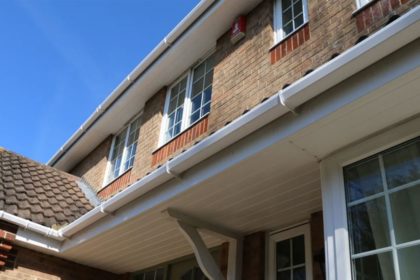 How Can I Improve Roof Insulation?
How Can I Improve Roof Insulation?
Thermal images of uninsulated homes show that vast amounts of heat escape all the time. Doors and windows are danger points, but by far the greatest percentage of lost heat goes out through the roof.
This creates a double whammy of soaring energy bills and a high carbon footprint. If you want to save both money and the planet, then improving your roof insulation is a no-brainer.
What Are the Types of Roof Insulation?
There are three main ways of insulating your roof from heat loss, and it’s best to have whichever are applicable:
- Loft insulation — This is a layer of material between the joists in your loft or attic. Materials used include mineral wool, fibreglass or cellulose, but improvised materials such as recycled plastic waste can be used. This will prevent heat from the rooms below from getting into the roofspace.
- Pitched roof insulation — This can be used in conjunction with loft insulation, preventing any heat that makes it into the roofspace from getting out. Here, the insulation materials are installed as an extra bottom layer of the roof itself.
- Flat roof insulation — If you have a flat roof, you may need very specific insulation methods, such as rigid insulation boards or spray foam insulation. It’s likely there won’t be a roofspace beneath a flat roof, so you’ll just have one level of insulation.
Do I Need More Roof Insulation?
Your home may already have roof insulation — but that doesn’t necessarily mean it’s adequate. For one thing, standards are higher now than they used to be, and you may find you don’t have sufficient thickness.
Even if older insulation is thick enough, it may be worn or have developed gaps. Depending on the extent of the problem, this may require the old insulation to be stripped out and replaced or a new layer placed over the old. In addition, there may be gaps around chimneys, vents or where walls and roof meet, and these places will need to be sealed.
Before you even consider improving your roof insulation, therefore, it’s vital to thoroughly assess what you currently have. If you know what you’re doing, you can do it yourself, but you’re likely to get a better result if you leave it to a professional.
Things to Consider About Your Roof Insulation
Roof insulation can do a great job of keeping the heat in — but, unless it’s expertly done, there’s a risk of blocking off essential ventilation. This can result in condensation, leading to damp patches on the walls, and even mould or mildew. It’s vital to allow the air to circulate properly by installing roof vents or soffit vents.
Also, bear in mind that your roof insulation will need regular maintenance. Even if it’s perfect when first installed, the materials can degrade over time, leaving the insulation falling short in performance.
Many homeowners try to save money by installing their own roof insulation. Besides the difficulty of doing the work safely, however, you’re running the risk of either missing some of the requirements or not doing the job to the right standards. It’s always best to have your roof insulation installed by experts — but it doesn’t have to break the bank, since you may be able to access a government grant.
Give Empire a call to find out how we can help you save money and reduce your carbon footprint with improved roof insulation.









